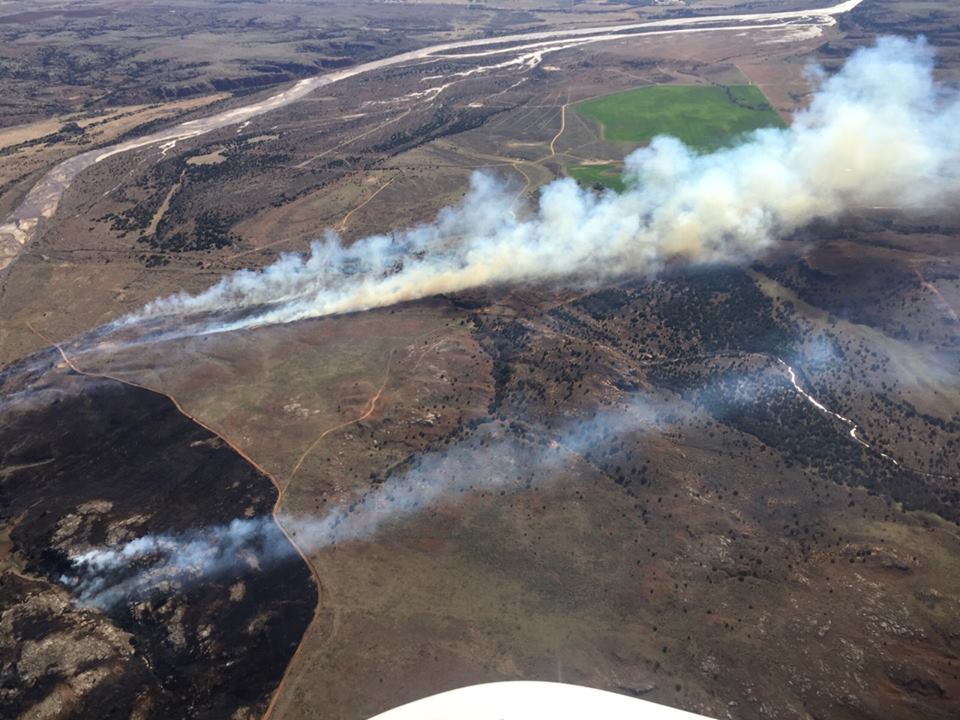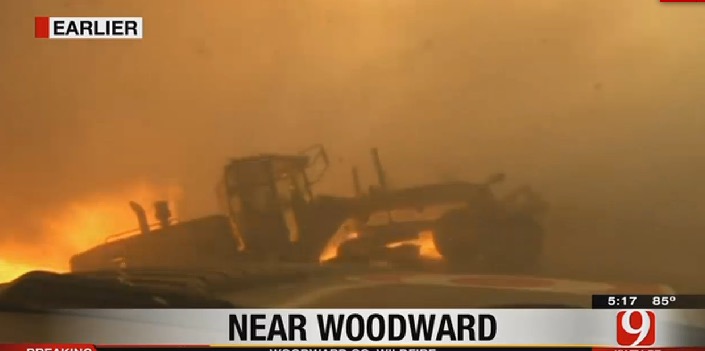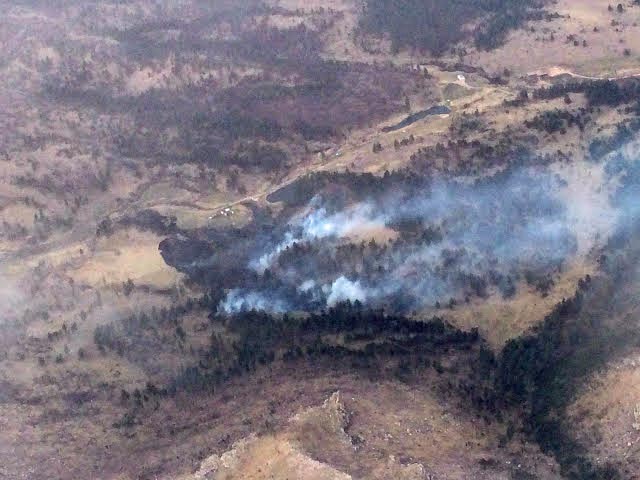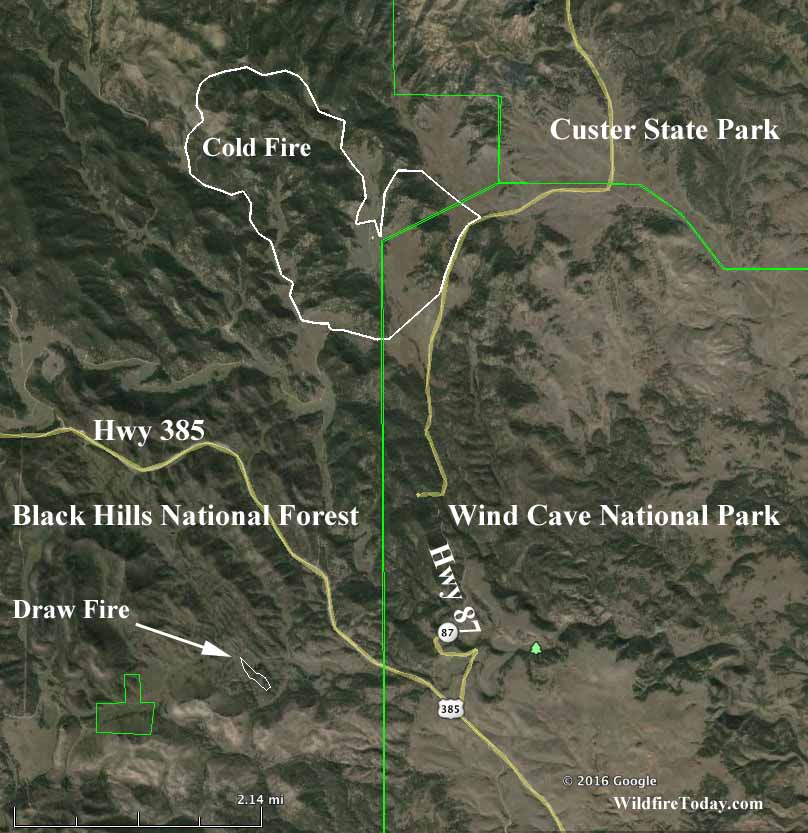Above: The 350 Complex of fires. Photo by Roy Anderson of the Oklahoma Highway Patrol.
What began as four separate fires merged into one large wildfire, named the 350 Complex, Wednesday afternoon in Woodward County in northwest Oklahoma.
An Oklahoma Forestry Services Incident Management Team is working in unified command with the Woodward Fire Department to battle the 57,440-acre blaze, utilizing firefighting task forces, heavy equipment and large air tankers to suppress the fire. Strong winds are causing rapid growth of the fire. Approximately 115 personnel are assigned, with more resources on order.
The 350 Complex Fires were started by power lines that whipped around and arced, caused by sustained 30 mph winds that gusted to over 50 mph. The fire is 0% contained as of Thursday morning. An unknown number of structures were lost, but no injuries or deaths have been reported at this time.
Warm temperatures, low relative humidity, and strong winds contributed to the start of additional fires Wednesday afternoon. Oklahoma Forestry Services is in unified command with the Guthrie Fire Department in responding to the Meridian Fire north of Luther in Logan County, which has burned about 500 acres and is 80% contained as of Thursday morning.
“With the fires we are experiencing and Red Flag Warnings in effect for most of the state, we have to remind the public again that doing anything to cause a spark is extremely dangerous today and over the next few days,” said Geissler. “Any fires that start in these conditions will have the potential to spread very quickly and present erratic fire behavior.”

Generally across the state, numerous new fires started Wednesday during Red Flag Warning conditions that were again present in the majority of Oklahoma. In addition, suppression activities continued on several on-going fires. Competition for suppression resources Wednesday was again high. Many of the wildfires were resistant to control due to the extreme fire behavior resulting from dry fuels, strong winds, and low relative humidity.
Oklahoma Forestry Services has established a statewide area command in Oklahoma City to prioritize the allocation of state and federal resources. State and Federal aircraft remain prepositioned across the state to support on-going and emerging incidents. Additional wildland fire suppression resources have been ordered from the Southern Forest Fire Compact to assist with on-going and new initial attack incidents









